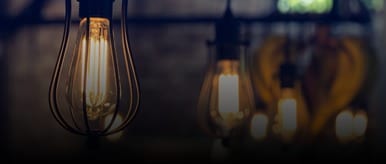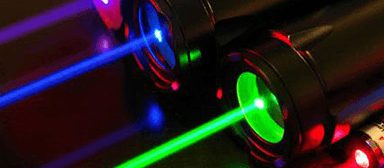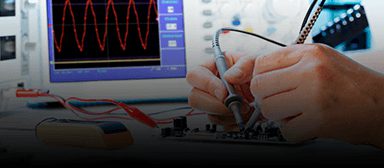FAQ: FDA Laser Notice No. 50
What you need to know about Laser Safety for United States and International markets
What is FDA Laser Notice No. 50?
Laser Notice No. 50 is an FDA guidance document that determines what components of IEC 60825 and IEC 60601-2-22 can be used to meet requirements found in 21CFR1040 for products employing lasers intended for sale in the United States. Laser Notice No. 50 allows manufacturers to submit reports for products demonstrating compliance to IEC 60825 or IEC 60601-2-22 as an alternative for meeting test data requirements in 21CFR1040.
However, it is important to note that Laser Notice No. 50 does not fully harmonize 21CFR1040 with IEC 60825 and/or IEC 60601-2-22 and there are additional requirements found in 21CFR1040 to which products must demonstrate compliance. According to the guidance found in Laser Notice No. 50, these requirements cannot be substituted to demonstrate compliance to 21CFR1040.
Who does Laser Notice No. 50 impact?
Manufacturers who intend on selling a product that employs a laser in both the United States and internationally must comply with the requirements set forth in both 21CFR1040 and the applicable IEC standards. For these manufacturers, awareness of Laser Notice No. 50 is critical to efficient market access, as it allows for certain requirements from these standards to be used as alternative proof of compliance.
It is critical to consider Laser Notice No. 50 during the design phase of a product, as it allows manufacturers to design to a single set of criteria instead of multiple requirements. This both accelerates their product’s time to market and lowers the overall cost of compliance.
When and Why was Laser Notice No. 50 introduced?
Laser Notice No. 50 was published in June 2007 to harmonize the United States’ and international criteria for products employing lasers between the oversight bodies, IEC and Center for Devices and Radiological Health (CDRH). Manufacturers with products compliant to IEC 60601-2-22 and IEC 60825 requested relief from CDRH criteria that required hazard reclassification when demonstrating compliance to 21CFR1040.
Laser Notice No. 50 was also published to clearly set requirements that would not be harmonized with IEC standards. These requirements are not within the IEC scope or are sufficiently different to require additional proof of compliance. It is important to note that certification to 21CFR1040 is within the non-harmonized set of requirements. This means that manufacturers’ products must comply with 21CFR1040 requirements and meet certification and documentation requirements of 21CFR1002 and 21CFR1010, regardless of compliance to IEC standards.
Advantages for Manufacturers
The biggest advantage for manufacturers is the ability to use conformance to certain sections of IEC 60825 and IEC 60601-2-22 as an alternative to test data requirements found in 21CFR1040. This allows manufacturers to perform less conformance testing to demonstrate compliance, thereby speeding their time to market and lowering overall design & compliance costs.
An example of harmonized standards that ease the burden on manufacturers can be found in the hazard classifications between 21CFR1040 and IEC 60825. Manufacturers can now design their products and safeguards around a single set of criteria for the existing hazards, rather than designing for separate hazard classifications based on compliance requirements. This allows for a more efficient design process by eliminating separate hazard classifications, which in turn eliminates the need for separate hazard mitigation.
Are there exclusions or exceptions to Laser Notice No. 50?
Laser Notice No. 50 is not a full harmonization of the requirements in 21CFR1040 and the applicable IEC standards. As such, certain criteria and requirements will differ when seeking final market acceptance. Non-harmonized requirements include removable laser systems, manual resets, demonstration products and laser products used for surveying, leveling & alignment.
Certification to 21CFR1040 is among the non-harmonized requirements and is necessary for the sale of laser employing products in the United States. There is no alternative IEC requirement that can be used in place of certification and products cannot be sold in the United States unless certification is achieved.
MET’s Laser Safety Capabilities
MET is qualified to test lasers and products employing lasers to IEC/EN 60825, IEC/EN 60601-2-22 and 21CFR1040. Our laser lab is capable of testing fiber optic products and all four categories of lasers for optical radiation concerns applicable to the aforementioned standards and regulations.
We have the equipment and expertise to accommodate laser-based products in the Medical, Telecom, IT, consumer applications, and industrial manufacturing industries. MET helps you evaluate your products for international standard compliance for multiple markets and ensures that your laser-based product meets all requirements for global market access.
About MET
As the world’s leading independent, third-party testing laboratory, MET is your single-source testing destination for optical radiation of laser products. With the capability to test and certify all four classes of lasers for optical and product safety, MET’s streamlined testing process helps you take your product to market faster and cost-effectively.
Take your products to global markets with MET’s global market access network. Through our international network of partners, MET can provide certification of acceptable optical radiation levels to multiple markets with a single test report. Our end-to-end testing capabilities, expert engineers, and single-source testing solutions help you meet demanding global market requirements and avoid the costs associated with multiple testings.





